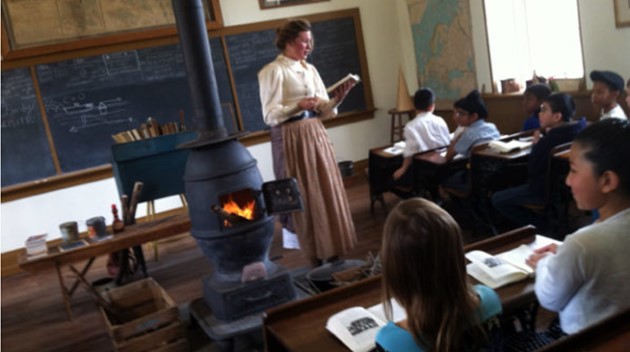Seneca Schoolhouse
16800 River Road, Poolesville, Maryland, 20837
About the Seneca Schoolhouse
Seneca, Maryland in 1880
Before 1865, Seneca children were home-schooled by parents or tutors, or received no formal education. In 1865, just as the Civil War was ending, Mr. Upton Darby, a farmer and miller (whose home still stands next to the Poole Store next to Seneca Creek) collected subscriptions from his neighbors to start a one-room school. Families contributed cash and skills. The Darby family provided two acres of land as well as the stone and wood for the building. Others offered to plaster and paint, or to dress the stone. Families with more limited means cut and seasoned oak for the wood stove. Others offered to board the teacher who moved from family to family each month.
The teachers were generally young unmarried men or women, and were paid a few hundred dollars a year. The teacher would recruit new students because their salary dipped if their class count fell below 25 pupils.
Near the Schoolhouse is the C&O Canal. Grain was taken by a small train along the Seneca Creek from the mill (where Old River Road meets Seneca Creek) to the C&O Canal. There it was loaded on barges and taken northwest to Cumberland and south to Georgetown. The canal lies alongside the Potomac River.
Although most of the students were drawn from local farms and settlements, many came from the barge families who plied the C&O Canal. During those winters of the “mini Ice Age” over a hundred years ago, the canal and river often froze solid. Barge families, who were forced to tie up and wait for spring, sent their children to school rounding out classes reduced by epidemics.
At the juncture of Seneca Creek and Potomac River was a quarry and a stone-cutting mill, which supplied the beautiful red Seneca Sandstone. There it was loaded on barges and wagons. This red sandstone is what the Seneca Schoolhouse is made of. The Smithsonian Institution’s Castle is built of the same Seneca Sandstone as the Schoolhouse.
Other interesting landmarks nearby include Montevideo directly across River Road from the Schoolhouse, and Rocklands on Montevideo Road. Montevideo was built in 1830 by John Parke Custis Peter, great grandson of Martha Washington. Rocklands, an exceptional Italianate house built of Seneca Sandstone, was the home of Mr. Lewis Allnutt who attended Seneca School as a young boy.
The Historic Medley District, Inc., a nonprofit organization dedicated to historic preservation in western Montgomery County, leases and operates the Seneca Schoolhouse Museum in Seneca State Park. We are delighted to bring Maryland history to life for your students.
In The News
Plenty Magazine
History Comes Alive at Seneca Schoolhouse. Schoolchildren embrace rituals of a Victorian classroom

Radio Station WAMU
NPR’s affiliate radio station, WAMU 88.5 FM featured a class at the Seneca Schoolhouse


Click to listen to show
↓
Montgomery Magazine
School is Still In Session at this One-Room Schoolhouse


